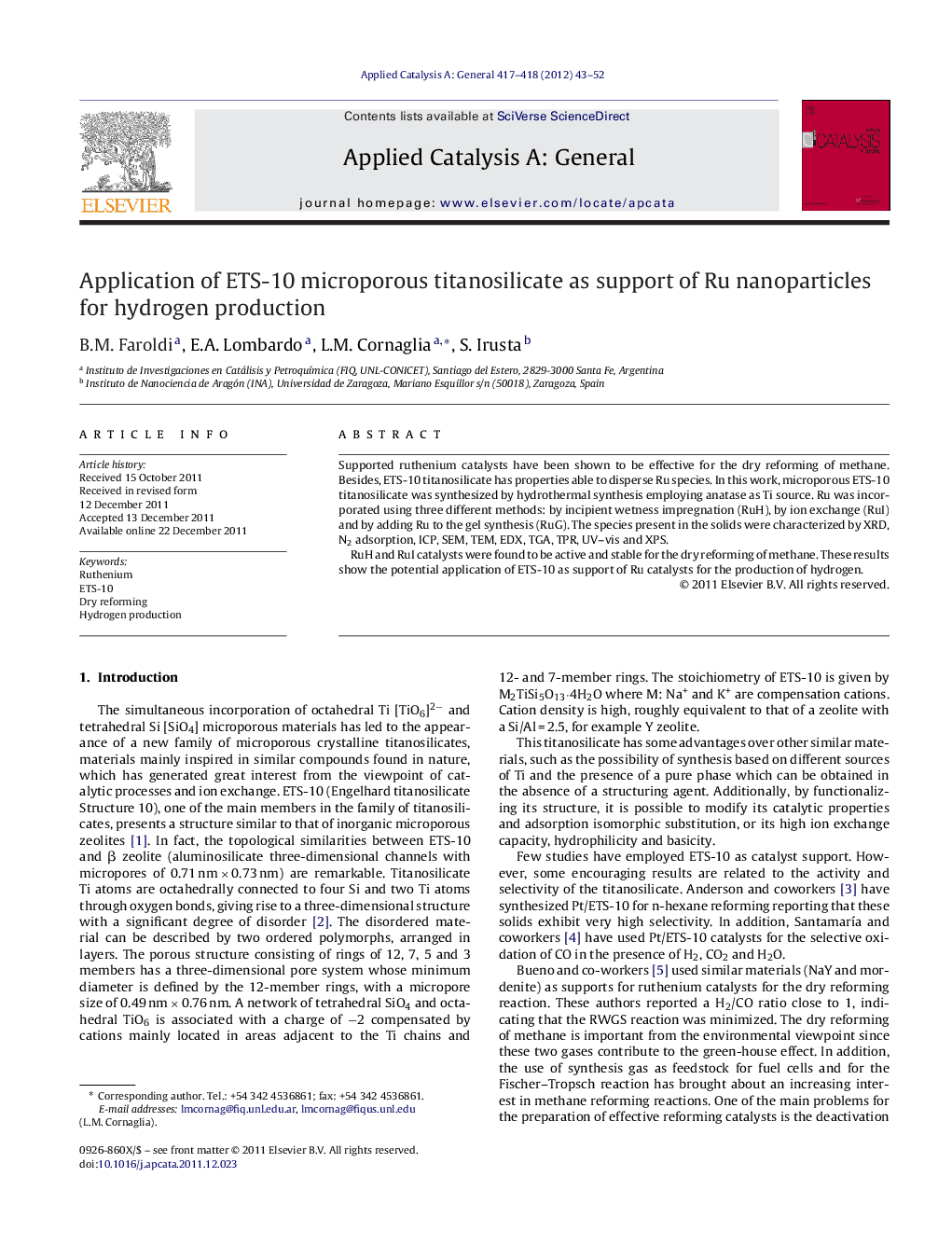| کد مقاله | کد نشریه | سال انتشار | مقاله انگلیسی | نسخه تمام متن |
|---|---|---|---|---|
| 41159 | 45879 | 2012 | 10 صفحه PDF | دانلود رایگان |

Supported ruthenium catalysts have been shown to be effective for the dry reforming of methane. Besides, ETS-10 titanosilicate has properties able to disperse Ru species. In this work, microporous ETS-10 titanosilicate was synthesized by hydrothermal synthesis employing anatase as Ti source. Ru was incorporated using three different methods: by incipient wetness impregnation (RuH), by ion exchange (RuI) and by adding Ru to the gel synthesis (RuG). The species present in the solids were characterized by XRD, N2 adsorption, ICP, SEM, TEM, EDX, TGA, TPR, UV–vis and XPS.RuH and RuI catalysts were found to be active and stable for the dry reforming of methane. These results show the potential application of ETS-10 as support of Ru catalysts for the production of hydrogen.
Figure optionsDownload high-quality image (130 K)Download as PowerPoint slideHighlights
► Microporous titanosilicates were synthesized to be applied as supports for Ru catalysts.
► In the case of the solid exchanged with dilute solution Ru is at exchange positions.
► For the impregnated catalyst, the Ru nano-particles were better dispersed.
► These catalysts were active and stable for the dry reforming of methane.
► Forward CH4 turnover frequencies increase with the increase in Ru dispersion.
Journal: Applied Catalysis A: General - Volumes 417–418, 29 February 2012, Pages 43–52